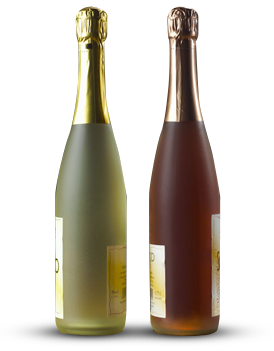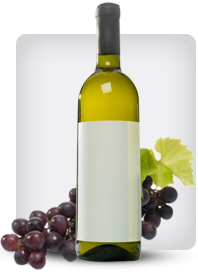

Tag: Beyond
Aging Potential of Premium Merlot: Beyond the Early Appeal
Posted onMerlot, often celebrated for its approachable, plush, and fruit-forward character in its youth, is frequently underestimated as a candidate for long-term cellaring. While mass-produced bottlings are crafted for immediate enjoyment, premium Merlot, sourced from esteemed terroirs and crafted with intention, possesses a remarkable capacity to evolve and complexify with age. Understanding the factors that contribute to its longevity reveals a wine of profound depth and sophistication, challenging its simplistic reputation.
The Foundation of Longevity: Structure and Balance
The ability of any wine to age gracefully hinges on its structural components: acidity, tannin, and alcohol. In premium Merlot, these elements exist in a harmonious balance that acts as a preservative, allowing the wine to develop slowly over time.
- Acidity: High-quality Merlot retains a vibrant acidity that provides freshness and prevents the wine from becoming flabby or tired as it matures.
- Tannins: While typically softer and more velvety than Cabernet Sauvignon, Merlot from great sites has a firm, finely-grained tannic structure. These tannins polymerize over time, softening and integrating into the wine, which contributes to a smoother mouthfeel.
- Fruit Concentration & Alcohol: A core of ripe, concentrated fruit and well-managed alcohol levels provide the material and body necessary to support extended aging without one element overpowering the others.
Terroir’s Crucial Role: Where Merlot Ages Best
Not all Merlot is created equal. The grape’s aging potential is profoundly influenced by its place of origin. The world’s most age-worthy Merlots hail from specific, often limestone and clay-rich, terroirs that naturally stress the vines, yielding lower yields and more concentrated berries.
- Pomerol & Saint-Émilion (Bordeaux, France): The benchmark for aged Merlot. Château Pétrus, while an extreme example, is predominantly Merlot and can evolve for half a century. Wines from estates like Le Pin, Vieux Château Certan, and Château Cheval Blanc (a Merlot-Cabernet Franc blend) demonstrate how Merlot develops incredible complexity of truffle, forest floor, cigar box, and dried cherries over 15-30 years.
- Tuscany, Italy: In regions like Bolgheri and within the “Super Tuscan” movement, Merlot is often blended or sometimes bottled alone. Wines like Masseto (100% Merlot) are legendary for their power and aging ability, developing notes of black plum, leather, and spice.
- Napa Valley & Washington State, USA: Top-tier producers in these regions focus on hillside vineyards and careful winemaking to produce structured Merlots. With time, these New World examples can develop nuances of cedar, cocoa, and stewed dark fruits, reaching their peak over 10-20 years.
The Evolution in the Bottle: A Flavor Journey
The transformation of a premium Merlot in the bottle is a study in aromatic and flavor development.
- Youth (1-5 years): The wine is dominated by primary fruit aromas—ripe plum, black cherry, raspberry, and often chocolate or mocha notes from oak influence. The tannins may be more perceptible.
- Maturity (5-15 years): The fruit becomes more subdued and savory. Secondary characteristics emerge, such as earth, leather, tobacco, and cedar. The texture becomes notably silkier.
- Full Maturity (15+ years): In the finest examples, tertiary notes take center stage. Think truffle, forest floor, dried figs, cigar ash, and graphite. The wine achieves a seamless harmony where no single component stands out, offering a profound and complex drinking experience.
Conclusion: An Investment in Complexity
To dismiss Merlot as a simple, early-drinking wine is to overlook one of the vinous world’s most versatile and rewarding grapes. Premium Merlot, with its robust structure and inherent balance, offers a compelling narrative of evolution. For the patient collector, cellaring these wines unlocks a dimension of flavor and elegance that their youthful versions only hint at, solidifying Merlot’s rightful place among the great age-worthy red varieties.
Beyond the Basics: The Best Wine Books for Advanced Learners
Posted onFor the passionate oenophile, the journey into the world of wine is a lifelong pursuit. Once you’ve mastered the major grape varieties and foundational tasting techniques, the true depth and complexity of viticulture and vinification begin to unfold. Advancing your knowledge requires resources that move beyond introductory guides and delve into the nuances of terroir, the science of winemaking, and the intricate histories of the world’s greatest wine regions. This curated list is designed for the serious student of wine, whether an aspiring sommelier, a dedicated collector, or a professional seeking to deepen their expertise.
1. The Definitive Tasting Guide: “The Wine Bible” by Karen MacNeil
While often recommended to beginners, Karen MacNeil’s masterpiece is an indispensable reference for advanced learners. Its true value at this stage lies in its encyclopedic, region-by-region detail. MacNeil doesn’t just describe wines; she tells the story of the vineyards, the winemakers, and the cultural context that shapes each bottle. For the advanced learner, it serves as a quick, reliable, and deeply insightful refresher on any wine region before a deep dive or a tasting, offering context that is often missing from more technical manuals.
2. The Geek’s Companion: “The World Atlas of Wine” by Hugh Johnson and Jancis Robinson
No advanced wine library is complete without this iconic work. The detailed, meticulously drawn maps are its crown jewel, providing a visual understanding of terroir that is simply unavailable elsewhere. By connecting topography, soil, and climate to the glass in your hand, Johnson and Robinson provide the essential cartographic context for understanding why a Burgundy from Vosne-Romanée tastes different from one in Gevrey-Chambertin. This is the go-to resource for visualizing the landscape of wine.
3. The Master of Terroir: “The New France” by Andrew Jefford
Andrew Jefford is one of the finest wine writers of our time, and “The New France” is a profound exploration of the country that remains the benchmark for quality and complexity. Jefford travels beyond the famous appellations to uncover the soul of French wine. His poetic yet precise prose delves into the concept of terroir with unparalleled depth, interviewing key producers and analyzing the forces—both human and natural—that shape modern French viticulture. This book will fundamentally change how you perceive and taste French wine.
4. The Scientific Deep Dive: “Wine Science: Principles and Applications” by Ronald S. Jackson
For those who want to understand the “how” behind the “what,” this is the essential academic text. Ronald S. Jackson’s work is a comprehensive university-level textbook covering every aspect of wine science, from grapevine physiology and microbiology to the chemistry of fermentation and aging. It is dense, detailed, and not for the casual reader, but it provides the scientific foundation that separates true experts from informed enthusiasts. If you’ve ever wondered about the precise impact of malolactic fermentation or the role of specific phenolic compounds, this book has the answers.
5. The Insider’s Perspective: “Adventures on the Wine Route” by Kermit Lynch
Wine is more than a science; it is an art and a passion. Kermit Lynch’s classic memoir chronicles his journey through France in search of wines with a sense of place. This book is a masterclass in the philosophy of quality wine. Lynch champions the importance of artisanal producers, natural winemaking, and the irreplaceable value of tasting sur place (on location). For the advanced learner, it provides a crucial counterbalance to technical knowledge, reminding us that soul, tradition, and the hand of the winemaker are as important as technical perfection.
Building Your Advanced Wine Library
The path to wine mastery is not linear. It involves cross-referencing scientific data with historical context, comparing tasting notes with geological maps, and balancing technical knowledge with philosophical understanding. The books listed above provide this multi-faceted approach. Start with the narrative and cartographic depth of MacNeil, Johnson, and Robinson, then layer in Jefford’s terroir-focused insights, ground it all with Jackson’s science, and let Lynch’s passion be your guide. Together, they form a curriculum that will continually inspire and challenge your palate for years to come.
popular posts
-

Top-rated Napa Valley Cabernet Sauvignon 2025: A Vintage of Elegance and Power
11-13 2025The 2025 vintage in Napa Valley is already being heralded as one for the history books. A near-perfect growing season, marked by a mild Read More
-

Top-Rated Old-Vine Zinfandel 2025: A Vintage of Power and Poetry
11-10 2025The year 2025 has bestowed upon Zinfandel lovers a vintage to remember. While trends in the wine world come and go, the profound depth Read More

